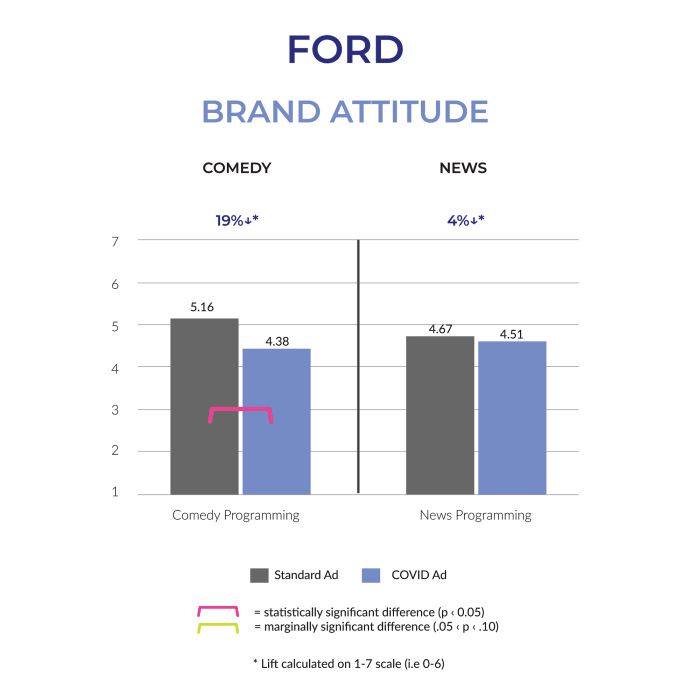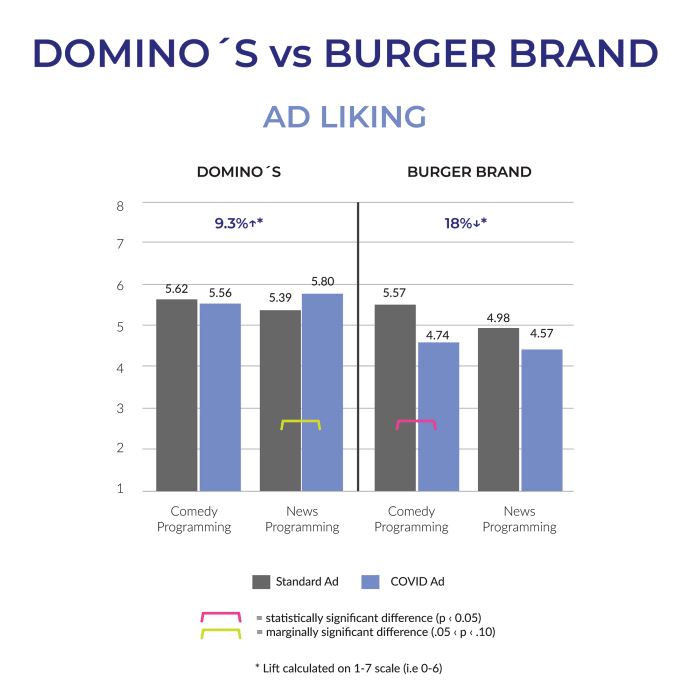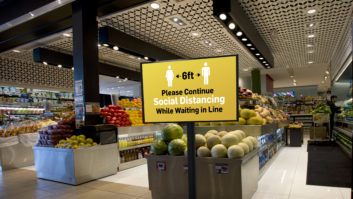COVID-19 has drastically impacted all of our lives. Amid this unprecedented pandemic, the question arises: Should brands continue communicating with their audience? Our new study reports the answer is a resounding “yes,” but with a caveat: Brands must have the right creative featured in the right programming.

The news is heavily focused on COVID-19 — a topic that is negatively impacting all viewers in some capacity. Does this topic create a brand safety issue? Is a sensitive message even necessary? Some advertisers have even paused their campaigns in favor of new ads that are relevant to the current issue. But is that the right approach?
We leveraged our in-home audience research solution, StreamPulse, which is a custom digital testing tool, facilitated in the comfort of people’s homes via a private over-the-top channel. Respondents experience the study on their TVs and not on a desktop or other proxy for the actual TV experience.
Proper experimental design isolated the variables of interest. Viewers were exposed to one of two environments: Primetime Comedy Programming or News Programming. Three news sources were used to control for biases, and viewers were recruited based on their preferred news source. Ad pods were consistent with linear TV and featured a mixture of standard ads and ads that were produced to be relevant to COVID-19.

Each brand was tested equally as a COVID-19 ad or a standard ad, featuring traditional messaging, which often included people in social settings and not practicing social distancing. After the viewing experience, participants took a post-exposure survey that assessed brand memory, purchase intent, ad liking, and brand attitude, among other measurements.
Emotional Dynamics Are Key
What COVID-19-themed ads prove, once again, is that the emotional dynamics of good advertising don’t go away just because what we have to say is important. We need to “show,” not just “tell” viewers our message — and do so in the right environment.
The results demonstrate that both context and creative execution are critical. Ads with COVID-19 messaging performed best in the news environment, which better matched the context of much COVID-19-themed messaging. Creative executions that were informational in character (e.g. “our drive-thru service remains open”) generally did worse than emotional appeal messaging, which, in some cases, outperformed the brand’s standard ads. For Ford, for example, COVID-19 brand messaging adversely impacted brand sentiment, ad-liking and purchase intent in the comedy environment, highlighting the risk it could pose to the brand’s equity. But such damage didn’t materialize in the news environment.

As might be expected, good creative execution is critical. While some brands produced COVID-themed ads that outperformed their traditional ads, other’s executions were less effective. For example, a Domino’s Pizza ad on “contactless delivery” did well (even better than its traditional ads when seen in news). Conversely, a COVID-themed ad for a burger brand did worse, particularly in comedy programming.
Above all, the research demonstrates that testing plays a critical role in optimizing both creative execution and media planning for COVID-19-themed messaging.
Duane Varan, Ph.D., is founder and CEO of MediaScience, a consumer media research firm.
This article originally ran on multichannel.com.
See also: Executive Insight: Repeat Business













